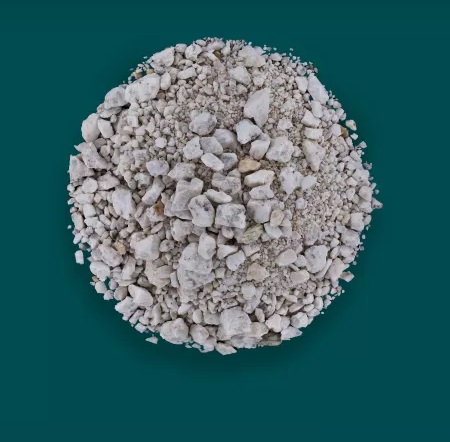Minerals

Mica
Mica is an ultra-platy, chemically resistant, reflective, refractive, resilient and temperature stable mineral, highly prized in a range of applications.
Mica is a naturally occurring, highly platy phyllosilicate of aluminium and potassium that occurs in book-like form that can be easily split into extremely thin, often transparent sheets that are both tough and flexible. Mica is fairly widespread and occurs in igneous, metamorphic and sedimentary rocks. Large mica crystals are typically mined from granitic pegmatites.
Only very few crystals are industrially mined. Muscovite white mica is the most common commercial form, accounting for 90 % of global consumption, followed by phlogopite, a bronze-colored variety. Mica is unique among platy minerals due to the broad range of particle sizes naturally available from microns up to several centimeters and even meters!
China Clay (Kaolin)
Kaolin is a rock from which the clay mineral kaolinite is derived. This one has been used for millennia as the principal ingredient in porcelain tableware. Today S.M. Overseas Pvt. Ltd. kaolins bring critical properties to a host of end applications ranging from paper to paints, fiberglass to cosmetics and pharmaceuticals.
Kaolin, or ‘china clay’ as it is commonly called, is a hydrated aluminum silicate crystalline mineral formed over many millions of years by the hydrothermal decomposition of granite rocks. Hydrous kaolin is characterized by its fine particle size, plate-like or lamellar particle shape, and chemical inertness.
S.M. Overseas Pvt. Ltd. offers a wide range of innovative and sustainable engineered kaolin-based solutions to help optimize customer performance within industries as diverse as ceramics, cosmetics, paper and packaging, paints, pharmaceuticals plastics, and rubber.


Calcite (Calcium carbonate)
Calcium carbonate is an essential and versatile mineral which finds its way into our daily life.
Calcium carbonate is one of the most abundant minerals on Earth and accounts for about 4% of the Earth’s crust. It can be found in nature in three principal rock types: chalk, limestone, and marble.
Chalk, a soft rock, is the result of poorly compacted sedimentary calcium carbonate rock, whose diagenesis is incomplete. Once the sedimentation process is complete, this results in the formation of limestone.
Marble, the hardest form of calcium carbonate, is a metamorphic rock, which is the result of the recrystallization process of limestone, under conditions of high pressure and temperature.
Quartz
Quartz is one of the most common and well-known minerals on the planet. Best known as the principal constituent of glass, quartz offers multiple other uses ranging from construction granulates to solar panels.
Quartz is a hard, crystalline mineral composed of silicon and oxygen atoms and the second most abundant mineral in the planet’s crust, after the feldspar family of minerals. Quartz is a defining constituent of granite and other felsic igneous rocks. It is common in sedimentary rocks such as sandstone and shale as well as schist, gneiss, quartzite and other metamorphic rocks.
Quartz crystals, which are hexagonal in shape, vary enormously in size and colour. This versatile mineral is both durable and chemically inert and demonstrates excellent heat resistance as well as electrical properties.


Fluorspar
Fluorite is an important industrial mineral composed of calcium and fluorine (CaF2). It is used in a wide variety of chemical, metallurgical, and ceramic processes. Specimens with exceptional diaphaneity and color are cut into gems or used to make ornamental objects.
Fluorite is deposited in veins by hydrothermal processes. In these rocks it often occurs as a gangue mineral associated with metallic ores. Fluorite is also found in the fractures and cavities of some limestones and dolomites. It is a very common rock-forming mineral found in many parts of the world. In the mining industry, fluorite is often called "fluorspar."
Although color is not a reliable property for mineral identification, the characteristic purple, green, and yellow translucent-to-transparent appearance of fluorite is an immediate visual clue for the mineral.
Feldspar
Feldspar is the most abundant group of minerals in the Earth’s crust. Their use in industrial applications is widespread. In fact, feldspar can be found in a great many objects we use on a daily basis!
Feldspar is the name given to a group of naturally occurring alumino-silicate minerals containing varying amounts of potassium, sodium, calcium, and/or lithium. The feldspar group of minerals is by far the most abundant group of minerals in the Earth’s crust, making up about 50% of all rocks. Feldspar minerals are essential components in igneous, metamorphic, and sedimentary rocks, to such an extent that the classification of a number of rocks is based on their feldspar content.
Feldspars are generally divided into three categories, feldspar, pegmatite and feldspathic sand, and are primarily used in industrial applications for their alumina and alkali content. Feldspars and pegmatites play an important role as fluxing agents in ceramics and glass production, and are valuable functional fillers in the paint and adhesive industries.

